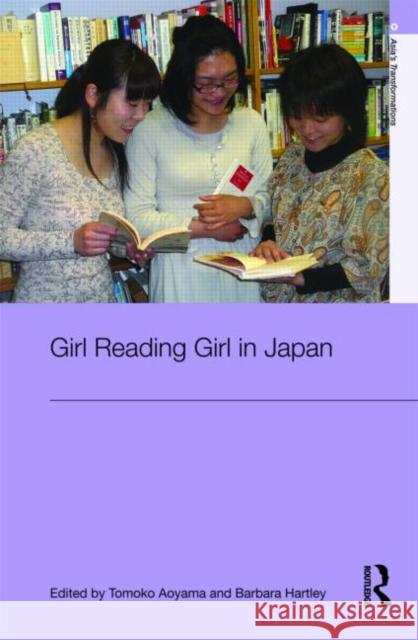Girl Reading Girl in Japan » książka
Girl Reading Girl in Japan
ISBN-13: 9780415547420 / Angielski / Twarda / 2009 / 238 str.
Girl Reading Girl in Japan
ISBN-13: 9780415547420 / Angielski / Twarda / 2009 / 238 str.
(netto: 696,83 VAT: 5%)
Najniższa cena z 30 dni: 705,23 zł
ok. 22 dni roboczych
Bez gwarancji dostawy przed świętami
Darmowa dostawa!
Girl Reading Girl provides the first overview of the cultural significance of girls and reading in modern and contemporary Japan with emphasis on the processes involved when girls read about other girls. The collection examines the reading practices of real life girls from differing social backgrounds throughout the twentieth century while a number of chapters also consider how fictional girls read attention is given to the diverse cultural representations of the girl, or shojo, who are the objects of the reading desires of Japan's real life and fictional girls. These representations appear in various genres, including prose fiction, such as Yoshiya Nobuko's Flower Stories and Takemoto Nobara's Kamikaze Girls, and manga, such as Yoshida Akimi's The Cherry Orchard. This volume presents the work of pioneering women scholars in the field of girl studies including translations of a ground-breaking essay by Honda Masuko on reading girls and Kawasaki Kenko's response to prejudicial masculine critiques of best-selling novelist, Yoshimoto Banana. Other topics range from the reception of Anne of Green Gables in Japan to girls who write and read male homoerotic narratives.
Provides the first comprehensive overview of the cultural significance of the reading practices of the girl, or shôjo, in modern and contemporary Japan and thereby invites a re-assessment of core propositions about gender norms in Japanese society.
One of the most powerful tactics adopted by the girl in her subversion of patriarchal society has been to seek out and read the writing, art work, appearance and social practices of other girls. In this way, the girl constructed a parallel imagined fantasy world that acknowledged her ideas and fulfilled her desires. Successive chapters in this collection examine the girl in literary narrative and related forms of expression such as manga and fashion. Included are discussions of cultural icons such as Yoshiya Nobuko and Yoshimoto Banana in addition to less well known writers, critics, translators and artists. While the focus of the collection involves girls reading the cultural productions of other girls, attention is also given to writing about girls, or for an audience of girls, produced by men and older women.
The first section of the book establishes the foundation for the body of the book by introducing the work of a number of women writers and critics whose endeavors have legitimized the girl as a topic of serious academic investigation; the second examines the reading girl of the late Meiji and Taishô eras when the concept of shôjo emerged; the third focuses on more contemporary material, including sexually explicit material for girl readers; and the final section on visual and graphic texts features discussions, for example, of the Lolita fashion of young women and also of girls who read and produce amateur comics based on the imagined universe of the Harry Potter stories.
With contributions by scholars from a range of disciplines including literary studies, history, translation studies, visual art, and cultural studies this book is a must-read for anyone interested in the shôjo.











